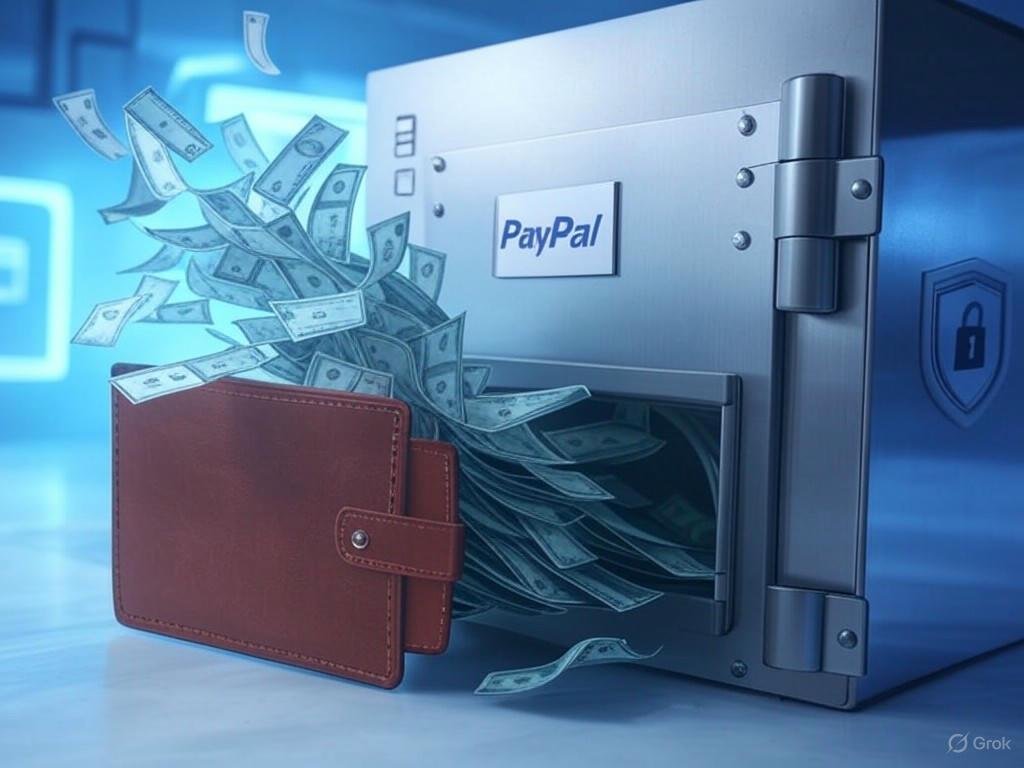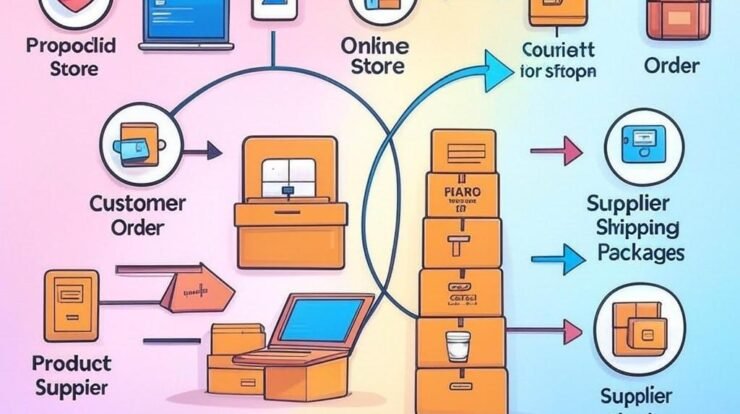PayPal is a household name when it comes to online payments, offering convenience, speed, and security for millions of transactions daily. Whether you’re buying a new gadget, paying for freelance services, or shopping on eBay, PayPal is often the go-to platform. But what happens when a transaction goes south? Maybe the item never arrived, or the service wasn’t as promised. Getting your money back from PayPal can feel like navigating a maze, but with the right know-how, it’s entirely doable. This guide dives deep into the process of securing refunds, filing disputes, and ensuring your hard-earned cash returns to your account. With over a decade of experience in e-commerce and online payment systems, I’ve seen it all—here’s everything you need to know to confidently recover your funds.
Understanding PayPal’s Refund and Dispute System

PayPal’s refund and dispute process is designed to protect both buyers and sellers, but it’s not always intuitive. At its core, PayPal offers mechanisms like the Buyer Protection program, dispute resolution, and chargeback options to help users recover funds when things go wrong. Knowing how these systems work is the first step to getting your money back.
PayPal’s Buyer Protection covers eligible purchases if an item doesn’t arrive, is significantly different from the description, or is otherwise faulty. However, not every transaction qualifies—digital goods, custom-made items, or services may have different rules. Disputes allow you to negotiate directly with the seller, while claims escalate the issue to PayPal for a formal review. Chargebacks, on the other hand, involve your bank or credit card issuer and are typically a last resort.
Before diving into the steps, it’s worth noting that PayPal processes millions of transactions daily, with a reported $1.53 trillion in total payment volume in 2023. With such a massive system, disputes are inevitable, but PayPal’s policies aim to balance fairness with efficiency. Let’s break down the process of getting your money back, step by step.
Step 1: Check Your Transaction Details
The first thing to do when you suspect an issue is to review the transaction in your PayPal account. Log in to PayPal and navigate to the “Activity” tab to find the payment in question. Check the details: Was it a purchase for goods, a service, or a personal payment (like sending money to a friend)? This distinction matters because PayPal’s Buyer Protection typically applies only to goods, not personal payments or certain services.
Look at the seller’s information, including their email and any notes attached to the transaction. Sometimes, the issue can be resolved by simply contacting the seller directly. For example, if an item hasn’t arrived, the seller might provide tracking information or offer a refund without escalation. Keep a screenshot of the transaction details, as this can be useful if you need to file a dispute later.
Pro tip: Always use PayPal’s “Goods and Services” option when paying for something online, as it offers more protection than the “Friends and Family” option, which is meant for non-commercial transactions and often isn’t covered by refund policies.
Read more: AiProductEngine Review: My Honest Take on This Game-Changing Tool
Step 2: Contact the Seller Directly
Before jumping into PayPal’s formal dispute process, try resolving the issue with the seller. Most sellers want to maintain a good reputation and will work with you to fix the problem. Use the contact information provided in the transaction details or through the seller’s website. Be polite but firm, clearly stating the issue—whether it’s a non-delivered item, a defective product, or a service not rendered.
For example, you might write: “Hi, I purchased [item/service] on [date] via PayPal, but I haven’t received it yet. Could you provide an update on the shipping status or process a refund?” Keep records of all communication, as PayPal may request this if you escalate the issue.
Timing is critical here. PayPal’s Buyer Protection generally requires you to file a dispute within 180 days of the transaction, so don’t wait too long to reach out. In my experience, most issues are resolved at this stage if the seller is responsive. If they’re not, or if the response is unsatisfactory, it’s time to move to the next step.
Step 3: File a Dispute in PayPal’s Resolution Center
If the seller doesn’t resolve the issue, it’s time to file a dispute through PayPal’s Resolution Center. This is where PayPal steps in to mediate. Here’s how to do it:
- Log in to PayPal: Go to the “Activity” tab and locate the transaction.
- Open a Dispute: Click on the transaction, then select “Report a Problem” or “Open a Dispute.” You’ll be prompted to choose the reason, such as “Item Not Received” or “Significantly Not as Described.”
- Provide Details: Be specific about the issue. Upload any evidence, like screenshots of the product listing, communication with the seller, or photos of a defective item.
- Submit the Dispute: Once submitted, the seller has 20 days to respond.
PayPal’s system will notify the seller, and they’ll have a chance to reply with their side of the story. During this phase, PayPal acts as a middleman, encouraging both parties to reach an agreement. For instance, the seller might offer a partial refund or a replacement item.
A real-world example: A friend of mine once ordered a custom phone case that arrived cracked. After the seller ignored her emails, she filed a dispute with photos of the damaged item. Within a week, the seller issued a full refund to avoid escalation. Clear evidence and a concise explanation can make all the difference.
Read more: Proven Strategies – Ways to Make Money Online from Home
Step 4: Escalate to a Claim if Necessary
If the seller doesn’t respond or the dispute doesn’t resolve the issue, you can escalate the dispute to a claim. This moves the process from negotiation to a formal investigation by PayPal. To escalate, go back to the Resolution Center, find the open dispute, and click “Escalate to PayPal.” You’ll need to provide additional details or evidence if you haven’t already.
PayPal’s team will review the case, looking at the transaction details, your evidence, and the seller’s response (if any). They may contact you for more information, so keep an eye on your email and PayPal notifications. This process can take up to 30 days, though it’s often faster.
One thing to keep in mind: PayPal’s decision is based on their policies, not necessarily what feels “fair.” For example, if you paid for a service and the seller can prove they delivered it, even if you’re unhappy with the quality, PayPal might side with them. This is why documentation is crucial.
Step 5: Explore Chargebacks as a Last Resort
If PayPal denies your claim or the transaction isn’t covered by Buyer Protection (e.g., a personal payment), a chargeback might be an option. A chargeback involves disputing the transaction through your bank or credit card issuer, not PayPal. This is only available if you funded the PayPal payment with a credit or debit card.
To initiate a chargeback:
- Contact Your Bank: Call your bank or credit card issuer and explain the situation. Provide the same evidence you used in the PayPal dispute.
- File a Chargeback: The bank will investigate and may temporarily credit your account while they review the case.
- Follow Up: Chargebacks can take 30–90 days, depending on the bank.
Be cautious with chargebacks, as PayPal may restrict your account if you bypass their process without attempting a dispute first. In my experience, chargebacks are most effective when PayPal’s Buyer Protection doesn’t apply, such as for unauthorized transactions or payments to shady sellers.
Read more: Best Websites to Make Money – Proven Platforms for Income Generation
Common Scenarios and How to Handle Them
Let’s look at some specific situations where you might need to get money back from PayPal and how to approach them.
Non-Delivered Items
If an item never arrives, check the tracking information first. If there’s no tracking or the seller can’t prove delivery, file a dispute under “Item Not Received.” PayPal typically sides with buyers in these cases, provided you act within the 180-day window.
Defective or Not-as-Described Items
For items that arrive damaged or significantly different from the listing, document everything. Take photos, compare them to the product description, and include this in your dispute. If the seller offers a partial refund, consider whether it’s fair before escalating to a claim.
Unauthorized Transactions
If someone hacks your PayPal account or makes an unauthorized purchase, act fast. Report the transaction in the Resolution Center under “Unauthorized Activity.” PayPal takes these cases seriously and may refund you quickly, especially if you have two-factor authentication enabled.
Scams and Fraudulent Sellers
Scams are trickier. If you paid for something and suspect the seller is fraudulent (e.g., they disappear after payment), file a dispute immediately. Provide any evidence of the seller’s shady behavior, like fake tracking numbers or inconsistent communication. If PayPal denies the claim, a chargeback might be your best bet.
Tips to Maximize Your Chances of a Refund
Over the years, I’ve learned a few tricks to improve your odds of getting your money back:
- Act Quickly: The 180-day window for disputes is strict. Don’t delay.
- Keep Records: Save emails, screenshots, and any proof of the issue. PayPal loves evidence.
- Be Clear and Concise: When filing a dispute or claim, avoid emotional language. Stick to the facts.
- Know the Policies: Familiarize yourself with PayPal’s Buyer Protection rules to understand what’s covered.
- Use a Credit Card: Funding PayPal with a credit card gives you the chargeback option as a backup.
Avoiding Common Pitfalls
Even seasoned users can trip up. Here are some mistakes to avoid:
- Paying with Friends and Family: This option offers no Buyer Protection. Always use Goods and Services for purchases.
- Missing the Deadline: If you wait longer than 180 days, you’re out of luck with PayPal’s dispute process.
- Not Checking Seller Reputation: Before buying, research the seller. Look for reviews or ratings on platforms like eBay or Etsy.
- Giving Up Too Soon: If PayPal denies your claim, consider a chargeback or appealing the decision with new evidence.
When PayPal Isn’t Enough: Other Options
Sometimes, PayPal’s process doesn’t work out. If you’ve exhausted disputes and claims, consider these alternatives:
- Contact the Seller’s Platform: If you bought through eBay, Etsy, or another marketplace, they may have their own refund policies.
- File a Complaint: In the U.S., you can report fraudulent sellers to the Federal Trade Commission (FTC) or your state’s consumer protection agency.
- Small Claims Court: For large transactions, legal action might be an option, though it’s rarely cost-effective.
Staying Safe with PayPal Moving Forward
Prevention is better than a refund battle. Here’s how to minimize issues with future PayPal transactions:
- Enable Two-Factor Authentication: This adds a layer of security to your account.
- Verify Sellers: Stick to reputable sellers with good reviews or verified PayPal accounts.
- Read the Fine Print: Check return policies and shipping details before buying.
- Monitor Your Account: Regularly review your PayPal activity for suspicious transactions.
Real-Life Success Stories
To give you some hope, here are a couple of examples from my network:
- The Missing Package: A colleague ordered a $200 camera lens that never arrived. After the seller provided a fake tracking number, she filed a dispute with PayPal, including screenshots of the listing and her emails. PayPal refunded her in full within two weeks.
- The Wrong Item: Another friend received a cheap knockoff instead of a designer bag. She documented the differences with photos and escalated to a claim. PayPal sided with her, and she got her $150 back.
These cases show that persistence and evidence are key. PayPal’s system isn’t perfect, but it works when you follow the process.
Wrapping Up: Your Path to a PayPal Refund
Getting money back from PayPal doesn’t have to be a headache. By understanding the system, acting quickly, and providing clear evidence, you can navigate disputes and claims like a pro. Whether it’s a non-delivered package, a faulty product, or a scam, PayPal’s Buyer Protection and dispute process are powerful tools—if you use them correctly. And if all else fails, chargebacks and external platforms offer additional avenues.
With online shopping only growing—PayPal processed 6.1 billion transactions in 2023 alone—knowing how to protect your money is essential. Armed with this guide, you’re ready to tackle any PayPal issue with confidence. Have you had a PayPal dispute? Share your story below—I’d love to hear how you handled it!






